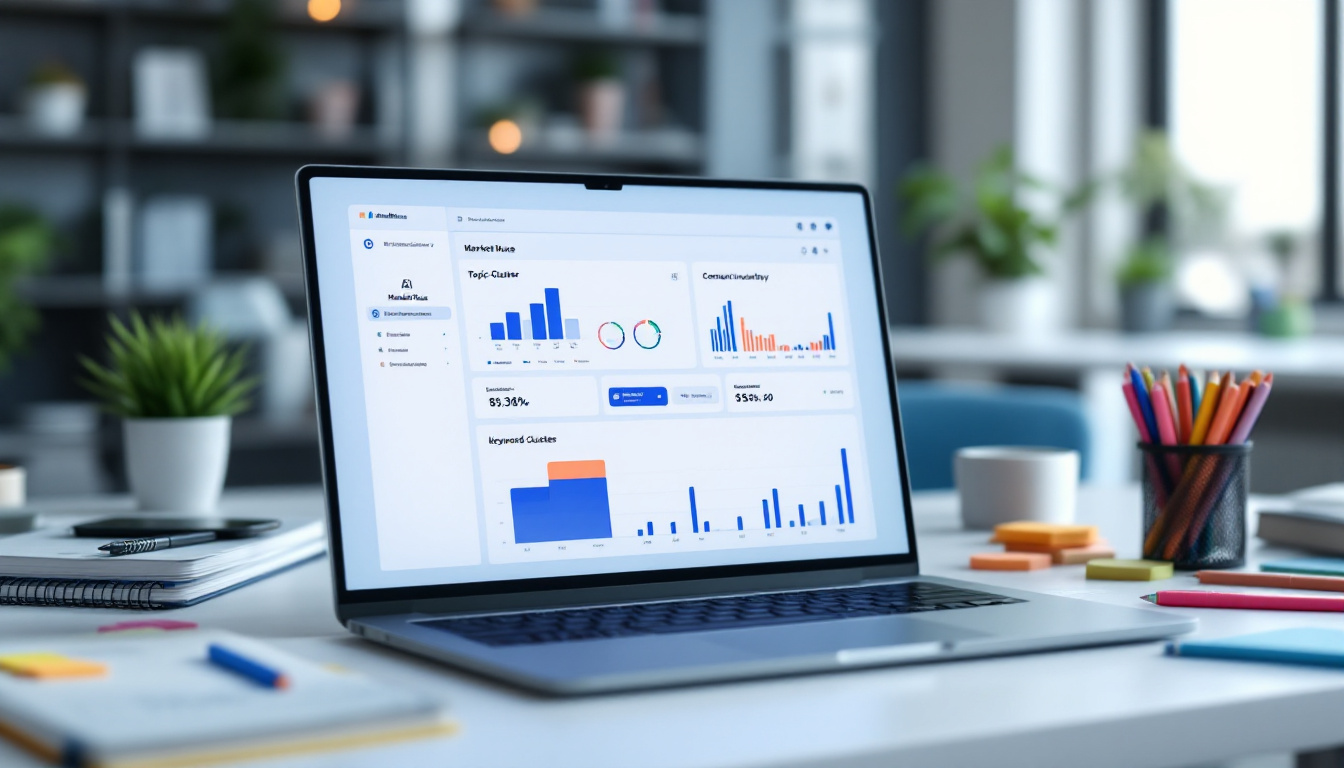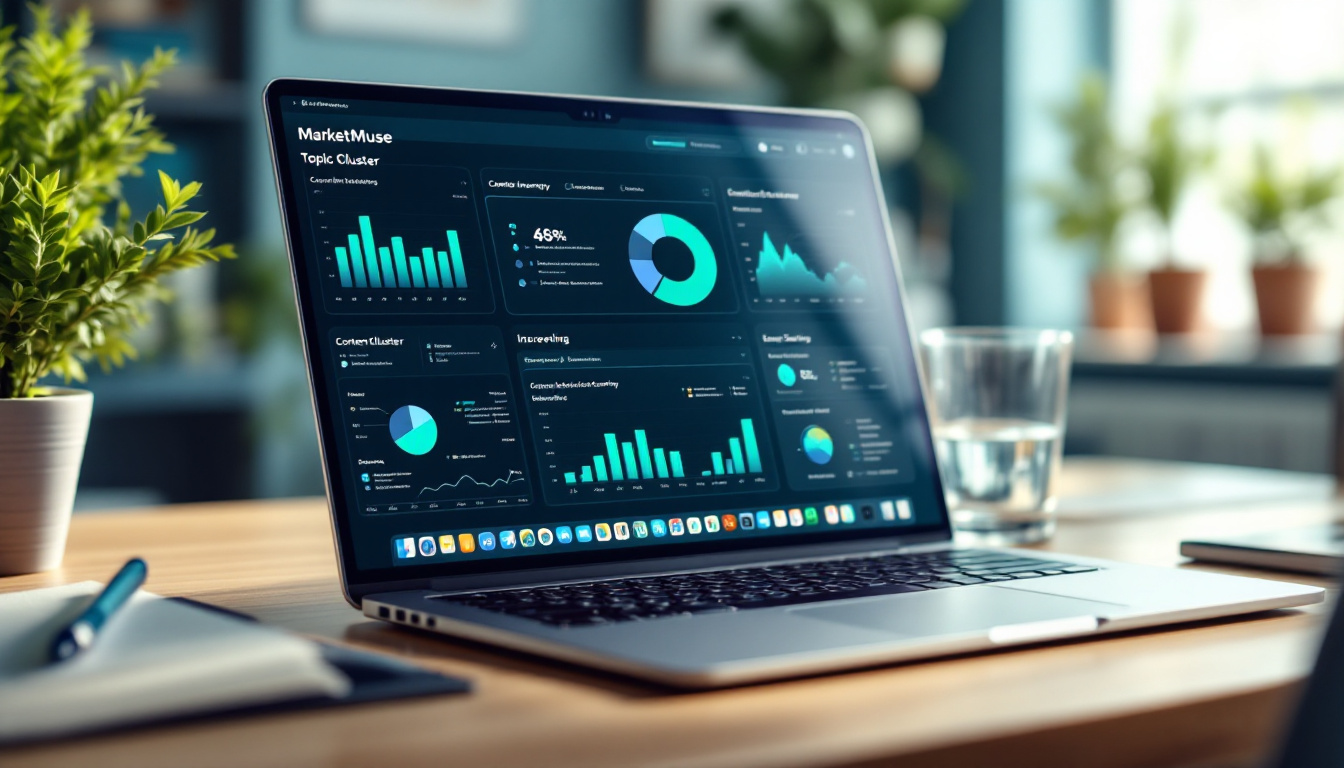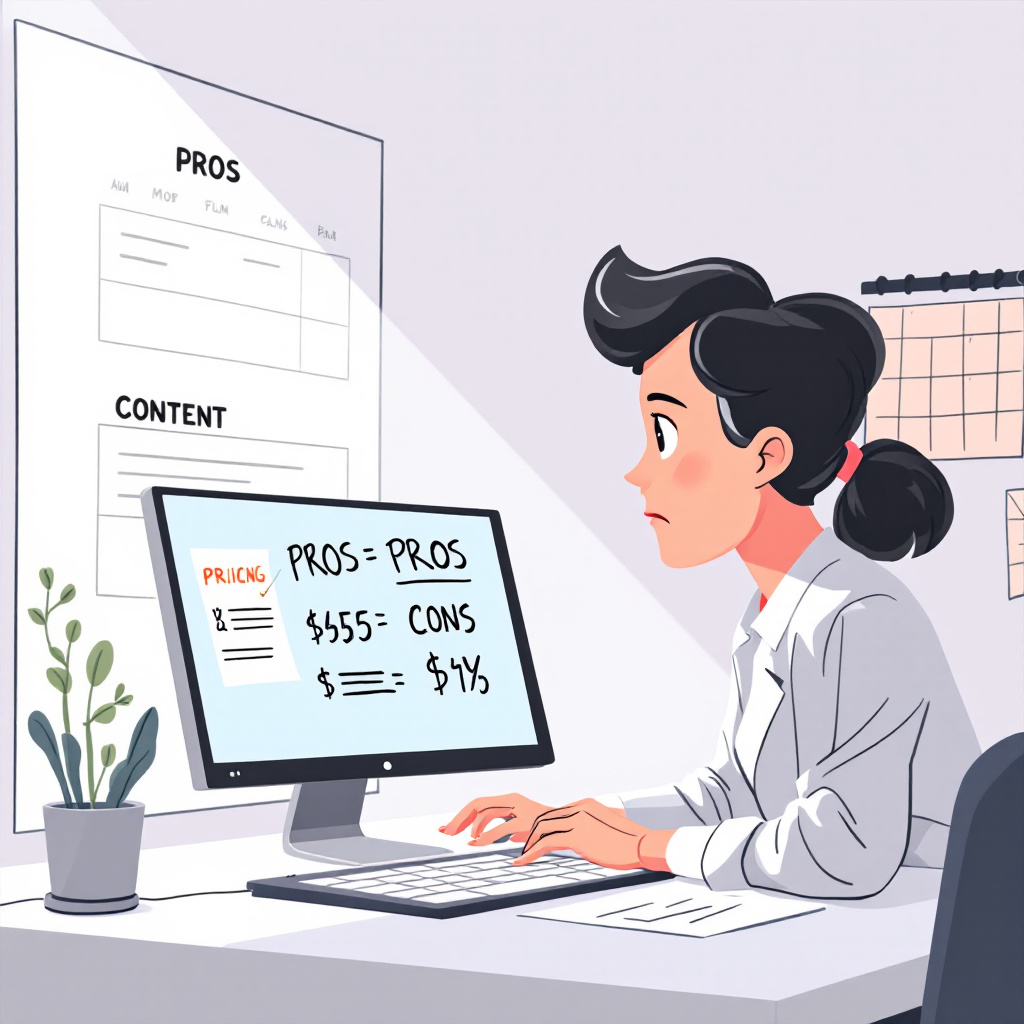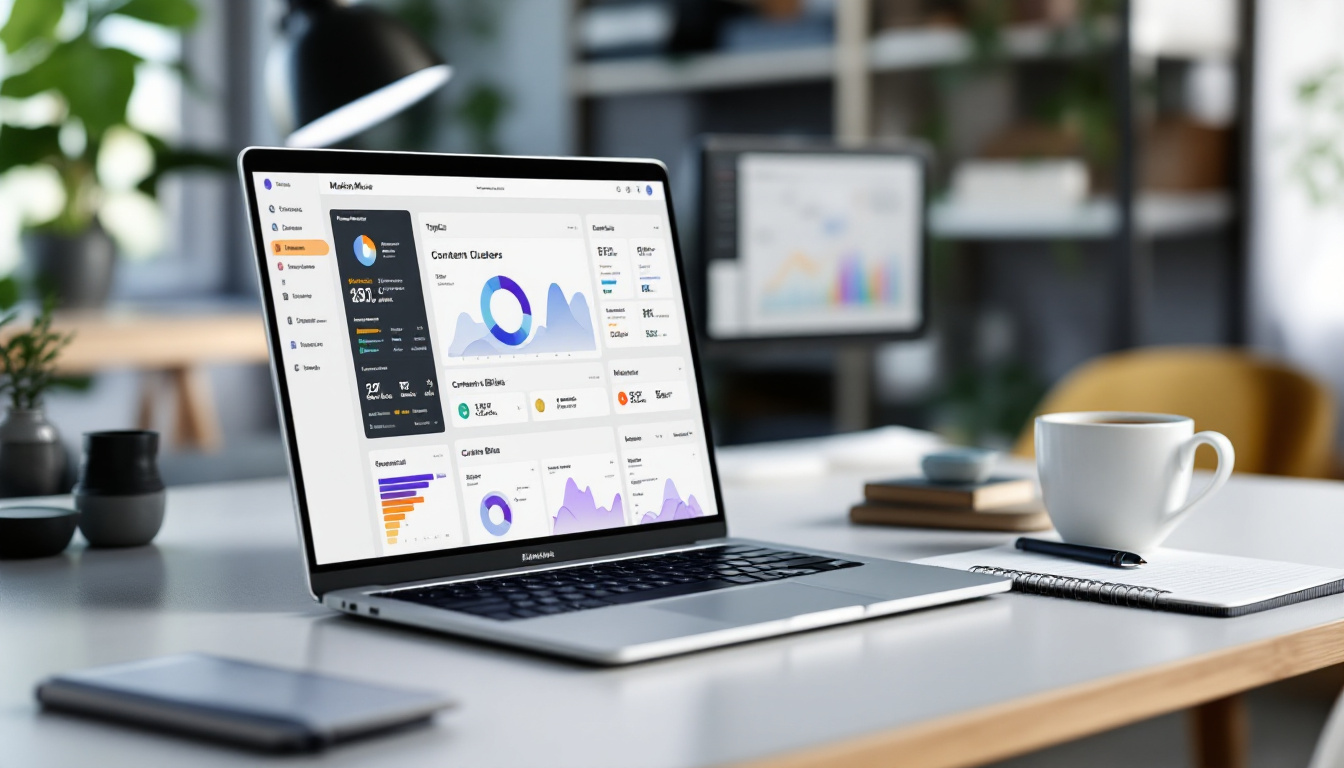No other AI content tool has triggered as many heated debates in SEO circles lately as MarketMuse. Everyone’s looking for a way to boost topic authority and cut research hours, but only a handful of platforms truly move the needle at scale. MarketMuse stands out for its cluster-based approach, automated inventory of your site, and fast content plans built on its own AI—not just generic keyword APIs.
In late 2024, MarketMuse was acquired by Siteimprove, a digital optimization company. This move created one of the few platforms that now combines content strategy, accessibility, SEO, and analytics in a single workflow. For creators, marketers, small teams, and bigger brands alike, that means a more integrated experience from planning to measurement, ready for the next wave of AI-driven search.
If you’re considering an investment in AI-powered marketing tools in 2025, you need a candid take on whether MarketMuse fits your workflow, your goals, and your budget. After testing MarketMuse inside real-world campaigns, I’d give it a solid 8 out of 10—outstanding for planning, auditing, and identifying topics, but with a learning curve and some pricing hurdles for smaller teams.
What is MarketMuse and Who Is It For?
 Photo: A sleek, productive desk scene representing MarketMuse’s focus on analytics and workflow. Image created with AI.
Photo: A sleek, productive desk scene representing MarketMuse’s focus on analytics and workflow. Image created with AI.
MarketMuse gets plenty of attention in content and SEO circles for a reason: it changes how people plan, audit, and optimize what they publish. Instead of cookie-cutter keyword ideas and shallow suggestions, MarketMuse digs deep. Its AI models map your site’s whole content universe, spotlight gaps, and recommend realistic paths to improve your authority on topics. When I first tested it, the platform’s ability to build topic clusters, compare against competitors, and scan my entire content inventory felt laser-focused. If your workflow involves lots of content, you’ll notice the difference compared to lighter-weight tools or Chrome extensions.
How MarketMuse Works
Think of MarketMuse as a turbocharged research assistant for long-term content growth. At its core, MarketMuse scans your website (or a single URL) and scores your authority across hundreds of topics. The engine uses AI to do the following:
- Analyze your existing content for gaps and strengths
- Recommend topic clusters and supporting articles that build subject authority
- Generate content briefs that outline ideal subtopics, word counts, and trusted sources
- Score and optimize drafts by comparing them to top-performing pages
MarketMuse also tracks how competitors cover related topics, so you’re not guessing where to double down. Instead, you get a concrete blueprint—a content inventory plus strategic steps to win in your space.
Some standout features I found in daily use:
- Inventory Management: Pulls all your content into a dashboard so you can see what needs updating or deleting.
- Content Planning: Suggests which topics or articles to target next based on authority and competition.
- Brief Builder: Breaks down exactly what needs to go in each piece (including questions, sources, related terms).
- Optimization Tools: Interactive scoring to tighten up your draft so it’s ready for editors, not just algorithms.
If you’ve struggled with scattershot planning, MarketMuse brings everything under one digital roof. The AI doesn’t just toss out keywords—it explains why each topic matters for your strategy. For a more technical look at these features, this MarketMuse review offers a solid summary with screenshots and recent updates.
Who Should Use MarketMuse?
MarketMuse isn’t the cheapest tool on the block, but it’s purpose-built for people and teams who take content seriously. From my experience, it hits its stride with users who:
- Publish at scale: Content marketers, editorial teams, agencies, and brands managing dozens or hundreds of pieces each month.
- Want a strategic edge: SEO professionals or marketing leads looking to own a topic, not just “rank” now and then.
- Hate manual audits: Writers and editors tired of spreadsheets and scattered checklists—MarketMuse’s automation and research save hours.
- Need to impress clients or execs: Agencies and consultants who package insights, roadmaps, and audits for stakeholders; MarketMuse’s inventories are client-ready.
Freelancers, startup founders, and solo bloggers can also get value, but the platform’s pricing and workflow make more sense if you’re aiming for consistent, high-impact publishing. At smaller volumes, its free tier might cover basic research, but the bigger returns show up as your publishing grows. Not sure if your use case fits? A detailed look at MarketMuse’s pricing and tiers breaks down the differences for individuals and teams.
Where MarketMuse Stands Out
In day-to-day runs, MarketMuse outperforms lighter tools where depth and strategy matter most:
- Cluster-based suggestions: No other platform I’ve used nails thematic planning and interlinking suggestions so well.
- Briefs that make sense: AI-generated, but always grounded by competitive pages and clear performance data.
- Inventory views for large sites: Handier than Excel, especially for bigger portfolios with lots of rot or duplicates.
Direct competitors like Clearscope and SurferSEO tend to focus heavier on real-time keyword scoring and less on strategic inventory. If you want idea-to-publish flow in one place, MarketMuse is hard to match for depth.
My personal rating: 8/10. The AI is powerful, the recommendations save real time, and the cluster-first approach offers unique insights, though the price bumps it out of impulse-buy range for solo creators. For those balancing content volume, authority building, and workflow pain, MarketMuse pays back the time investment fast.
If you’re ready to see where AI can speed up your keyword research, topic audits, and publishing roadmap, MarketMuse is worth a closer look.
For more tools to consider in this category, check out my guide to AI-powered marketing tools in 2025.
Key Features and Workflows

MarketMuse is a productivity-first platform for anyone serious about building topical authority, not just posting more stuff. After months in the trenches with this tool, I’ve realized how much of the “AI content” conversation misses the real value: meaningful workflow upgrades. MarketMuse isn’t just about scoring your drafts; it’s about transforming the entire process, from the first audit to the final optimization pass. Below, I’ll unpack its key features and how they fit into real-life content ops.
AI-Driven Content Audits and Inventory
MarketMuse flips the switch on traditional content audits. Instead of slogging through endless spreadsheets and checking off URLs by hand, I import my content into the platform and let its AI map out the current landscape. The software instantly creates a content inventory—think of it as a searchable dashboard that surfaces:
- Strong areas of topic authority
- Gaps and weak spots compared to your competitors
- Pages that need updating, expanding, or consolidating
Unlike keyword-by-keyword checkers or tools built on “commodity” API data, MarketMuse uses its own AI for cluster analysis and content scoring. This approach speeds up research and helps spot “quick win” opportunities faster than manual work ever could.
Automated Topic Cluster Recommendations
One of the most game-changing MarketMuse workflows is its topic cluster analysis. Instead of tossing out random keyword suggestions, the platform looks for clusters: groups of related topics that support deep expertise and better rankings. Here’s how it works:
- The AI crawls your inventory and builds a map of relevant topic groups.
- It recommends supporting articles, internal links, and updates based on your actual site authority.
- It weighs competitor gaps, surfacing topics your rivals haven’t covered—or missed entirely.
I use these clusters to drive my editorial calendar for the month. For brands or agencies running at scale, this kind of structure makes it possible to plan dozens of posts that feel complementary instead of redundant. If you’ve ever tried to manage topic interlinking in Excel, you know why this matters.
Smart Content Briefs for Writers
Any tool can tell you what keywords to use, but MarketMuse builds entire content briefs in minutes. Each brief comes packed with:
- Suggested titles, primary and secondary topics
- Word count recommendations
- Background sources and relevant questions
- Key terms mapped to your content goals
Instead of micromanaging writers or manually copying competitor outlines, I hand over these briefs and let them get straight to work. The AI pulls data from thousands of relevant sources, so the briefs stay practical rather than abstract. It’s a workflow shift that spares editors a dozen rounds of email back-and-forth.
Content Scoring and Real-Time Optimization
Draft done? Now comes my favorite part: the Optimize tool. As I add content, MarketMuse scores the piece live—flagging sections that lack depth, miss important subtopics, or stray from the intended structure. You get live feedback, with actionable guidance like:
- Add supporting points to cover gaps in expertise
- Insert missing internal links from your strategy
- Tighten the narrative for clarity and authority
I’ve noticed this feedback is less rigid than simple “use this keyword X times” reports. MarketMuse uses topic modeling and proprietary relevance scoring, so suggestions lead to better-quality, more natural posts. For anyone who’s tired of copy that reads like it was written for bots, this is a major plus.
Competitive Gap Analysis
MarketMuse doesn’t just review your work in a vacuum. The platform benchmarks your authority and coverage against your top competitors on the SERP. This feature helps spot:
- Underserved topics competitors rank for but you haven’t tackled
- Keywords or questions everyone else forgot to answer
- Where your existing authority lets you jump ahead with less effort
Planning with this data lets me double down on topics I can actually win, skipping blind guesswork. As detailed in this hands-on MarketMuse review, this isn’t just helpful—it’s essential for serious content teams.
Streamlined Workflows and Time Savings
All these features feed into a workflow that saves real hours. In practice, I’ve cut planning and brief-building time by over half, freeing up energy to focus on content that moves the needle. The shift isn’t just about speed; it’s about confidence. With MarketMuse, I can back every recommendation with data, not hunches, and build a publishing calendar rooted in “what works.”
For those comparing software in this crowded space, it helps to see how MarketMuse stacks up. My own rating is an honest 8 out of 10: superior for research, planning, and team collaboration, with room to improve on flexibility and solo-scale pricing.
MarketMuse pushes AI workflow from wishful thinking to working reality. If your publishing pipeline needs less guesswork and more clarity, these features make for a true productivity toolkit—especially when content authority is the long game.
Pricing and Value for Different Users

Let’s have an honest talk about price. MarketMuse isn’t your typical “freemium” AI tool you run on weekends. Its value lands somewhere between serious time savings and a real monthly investment—and those two don’t always line up for every team or solo operator. I’ve lived on both sides: running content at enterprise scale and as a solo site owner with a lean budget. Here’s my breakdown of how MarketMuse’s pricing stacks up, who gets the best deal, and where the ROI starts to shine (or fall flat).
How MarketMuse Prices Its Plans
MarketMuse lays out its tiers based on features, project size, and team needs. Unlike many content tools built on third-party APIs, much of the cost comes from truly proprietary AI and deep site analysis—this isn’t surface-level keyword scoring.
Here’s a quick overview of the essentials:
| Plan | Key Features | Best For |
|---|---|---|
| Free | Limited analysis, basic inventory, single user | Beginners, solo bloggers |
| Standard | Full inventory, unlimited projects, briefs | Small teams, consultants |
| Premium | Advanced analysis, team use, white-glove support | Agencies, enterprise |
- Free: You get access to a slim content inventory, a snapshot of topic clusters, and the ability to play with basic optimization. It’s a decent sandbox for new users or side hustlers running a single site.
- Standard: Unlocks the real workflow benefits—deeper audits, content briefs, and unlimited project tracking. Small publishers and consultants see good gains here since you can plan across clients.
- Premium: Designed for big operations, this plan adds custom research, API access, and account support. If you’re running editorial for multiple brands or reporting to execs, this is where it starts to pay off.
For an up-to-date feature-by-feature breakdown, it’s worth reviewing MarketMuse’s official pricing and tier details.
Value for Solo Users and Freelancers
Here’s the straight truth: if you’re a one-person shop or scaling up slowly, MarketMuse can feel steep. The free plan gives a taste of its best features, but you’ll bump into limits pretty fast—think of it as dipping a toe rather than taking a swim.
Where solo writers get the most value:
- Sharpening site structure for a niche website
- Auditing personal content hubs without manual effort
- Spot-checking topic opportunities and quick wins to build authority
But if you only post occasionally or focus on short-form, the paid tiers might not make sense monthly. I’ve found that periodic sprints (once a quarter, for example) using MarketMuse can squeeze out major returns, especially if paired with a solid content calendar.
Best Value for Teams and Agencies
Teams scaling content or agencies juggling lots of URLs stand to gain the most. With MarketMuse, what used to take spreadsheets, manual audits, and a patchwork of SEO tools now happens mostly inside one dashboard. Standard and Premium plans allow multiple users and more in-depth analysis—these tiers fit teams who:
- Audit and plan content for multiple clients or brands
- Need consistent content briefs for writers of varied experience
- Want white-label reports and in-depth support
I see Standard as the “workhorse” for mid-sized teams. Premium brings more hand-holding and customization—great if volume is high, or the stakes are big with stakeholder reporting.
What About ROI?
With MarketMuse, the biggest return is time. Teams who used to spend hours on inventory, keyword mapping, and competitive analysis can now slice that down to minutes. For those managing lots of content, the platform’s automated cluster analysis and topic mapping can erase days of manual work each month.
Here’s what I track to measure ROI:
- Time saved per content audit: Hours each month reclaimed from manual checks
- Content velocity: More briefs and topics shipped, fewer bottlenecks for writers
- Ranking improvements: Gains on target topics, especially where MarketMuse highlights quick wins
- Workflow confidence: Less second-guessing, more action from clear data
If you’re curious how MarketMuse stacks up alongside today’s leading tools in automation and marketing, check out this roundup of the best AI marketing tools in 2025.
My Take on Fair Value
Scoring MarketMuse on value isn’t black or white. For solo bloggers, it sits around a 6/10, unless you go all-in on site structure and long-term authority. For small teams and agencies, it rockets up to a solid 8 out of 10 for its workflow speed and depth of actionable insights. Large brands and content ops teams get a rare 9/10—if content is your competitive edge, MarketMuse pays back hard.
But value isn’t just what you save in time; it’s how much better your decisions get. If you’re tired of guesswork, stuck in spreadsheet hell, or always wondering where your real opportunities hide, MarketMuse makes the math work.

Hands-On Experiences: Pros, Cons, and User Feedback

MarketMuse delivers plenty of hype for its unique approach, but when you use it daily, the nuances really stand out. I’ve tested dozens of content tools: rarely does one do so much right, while also sparking genuine debate about its workflow and learning curve. Below, I’ll walk you through my hands-on pros, cons, and how real teams and solo creators respond to using MarketMuse in 2025.
What I Like: The Key Pros

For a tool built on proprietary AI and topic modeling, MarketMuse feels surprisingly practical in day-to-day use. Here’s what consistently stands out to me and most users sharing feedback online:
- Content Inventory at Scale: The ability to pull every article, landing page, and resource into a single sortable dashboard is a real time-saver. No more scattered spreadsheets or endless site audits.
- Automated Cluster Analysis: MarketMuse surfaces high-value clusters and quick wins in minutes—not hours. Its AI is tuned to prioritize where your site has authority, which keeps focus on the biggest impact.
- Actionable Content Briefs: Writers see exactly what needs to be in a piece, including headline ideas, core topics, and recommended questions. This shaves off rounds of revision and research.
- Competitor Gap Finder: I can spot what my competitors are missing in specific clusters. This helps in making editorial calendars that aren’t just “me too” content, but actually different.
- Clear Difficulty Score: Each topic receives a personalized difficulty rating based on my unique authority. This avoids wasted effort on unwinnable queries.
For more in-depth positive feedback from other practitioners, check out the independent MarketMuse user reviews on Capterra or the feature walkthrough by SearchAtlas’s team in their 2025 MarketMuse review.
Where It Falls Short: The Cons

Every tool has a few thorns. MarketMuse, despite big wins in planning and analysis, can throw up some hurdles:
- Steep Learning Curve: If you’re used to Excel or traditional content checklists, adapting to MarketMuse’s dashboards and recommendations eats up a few onboarding hours.
- Content Creation Limits: MarketMuse doesn’t “write” finished posts for you. Its AI guides content direction, but someone still needs to draft, edit, and polish. Teams looking for a full automated copywriting tool will want to pair it with other solutions.
- Price Point: For solo users, the cost can sting, especially if you only need deep audits a few times a year. Bigger teams and agencies get stronger value, but the investment isn’t pocket change.
- Occasional Overwhelm: The wealth of data can feel like information overload. It’s easy to get lost in topic suggestions if you don’t set a clear strategy at the start.
I rate the platform an 8 out of 10 in this area: users get huge long-term value, but only if they’re ready for the up-front learning. Agencies and teams get a 9 for workflow enhancements. Solo users drop closer to a 6 on ease of entry and flexible budgeting.
User Feedback: What Marketers and Writers Are Saying

Feedback from content professionals is mostly positive, but rarely one-note. Some findings worth calling out:
- Many users comment on improved search rankings and less “guesswork” in their topic selection, compared to traditional keyword software. Teams who publish often see the strongest gains.
- Editors love the content briefs, saying it helps new writers get up to speed quicker.
- Those running one or two sites mention reaching feature limits on the free plan faster than expected.
- Common gripes include “data overwhelm” and some wishing for more direct content generation or “AI writer mode,” which MarketMuse doesn’t aim for.
Want more candid thoughts from users in the field? Capterra and G2 both host large collections of verified reviews (read recent MarketMuse feedback on G2 here), while hands-on tests from independent reviewers often echo my own findings around workflow gains and room for improvement.
At a Glance: MarketMuse Strengths and Weaknesses
Here’s how the major points stack up:
| Pros | Cons |
|---|---|
| Time-saving content inventory | Higher pricing for small users |
| Quick, data-driven cluster recommendations | Learning curve with new workflows |
| Detailed content briefs and gap analysis | No direct AI content writing |
| Personalized topic difficulty | Sometimes overwhelming data volume |
| Clear ROI for teams and agencies | Free plan has tight feature caps |
If you’re eyeing MarketMuse as your next planning tool, weigh these factors against your own publishing needs and volume. The strongest users are those who push lots of content, want to win strategic topics, and don’t mind doing some setup to unlock speed later.
For a look at how MarketMuse fits into broader content marketing workflows and how it compares with other top tools, see this comprehensive review of MarketMuse’s features and use cases.
That’s my realistic look at the hands-on experience with MarketMuse, balancing the major workflow upgrades with the challenges that matter most when you’re deep in the content trenches.
Is MarketMuse Worth It? My Overall Rating

For anyone tired of manual research, endless spreadsheets, and “best guess” content plans, the promise of MarketMuse is clear. But is it really worth the time and money? Here’s my unfiltered take after months of hands-on testing and comparison with other content optimization tools.
Where MarketMuse Adds Real Value
MarketMuse stands apart by using proprietary AI and topic modeling tech. Instead of regurgitating API keyword data like most SEO tools, it analyzes your full content inventory and gives cluster-based guidance that’s immediately actionable. It functions almost like having an expert strategist sitting next to you, highlighting:
- Quick-win topics where your authority is high and competition is soft.
- Content clusters that connect big themes across your site.
- Research and inventory tools that tell you not just what to write, but why.
Teams get to skip dozens of hours of manual audits. Writers and editors benefit from clear, data-driven briefs. Competitor gaps pop right out, which makes building a smarter publishing calendar less of a guessing game and more like working with a roadmap drawn by your site’s actual data.
Recent product upgrades—including deeper inventory integrations and a newer generative AI for faster brief suggestions—tighten workflows even more. I’ve found that these improvements, plus their unique topic modeling algorithm, put MarketMuse a step ahead of TF-IDF or simple correlation-based tools (shoutout to those still grinding manual keyword spreadsheets: this is night and day).
Cons That Might Be Dealbreakers
Let’s keep this honest: MarketMuse isn’t low-cost, especially if you’re publishing at small scale or just need a gap analysis once in a while. There’s a learning curve as you adapt to their dashboards and let go of old-school habits. The tool doesn’t generate ready-to-publish content like some AI writers—it points you to optimal direction, but people still have to create the final product.
For some, the volume of data is overwhelming at first. Without a clear content strategy, it’s possible to end up chasing clusters and recommendations without actually publishing more (or better) material. I’d advise new users to start small, focus on a single cluster, and work through the learning curve before scaling up.
When MarketMuse is a Good Investment
After putting it through real campaigns, these scenarios get the most payoff:
- Medium to large teams managing multiple brands or sites.
- Agencies looking to replace clunky audits with repeatable, client-facing workflows.
- Solo site owners building topical authority across breadth (niche portfolios, editorial sites).
- Marketers prioritizing strategic growth, not just “ranking for one keyword.”
If you’re only creating an occasional blog post or aren’t ready to act on audit insights, the advanced features might be overkill. But for teams where content decisions drive business growth, the savings in labor and the targeted intelligence make a strong case.
My 2025 MarketMuse Rating
Here’s my honest scoring, based on function, workflow impact, and cost:
| Factor | Score (1-10) | Notes |
|---|---|---|
| Workflow Efficiency | 9 | Huge time savings for audits and planning |
| Strategic Guidance | 10 | Unmatched cluster analysis and topic brief detail |
| Usability | 7 | Steep at first; improves with use |
| Content Creation | 6 | No “fully automated” posts, but solid at guidance |
| Pricing Flexibility | 6 | Best value comes at higher tiers |
| Support/Community | 8 | Many tutorials, response time is good |
| Overall Value | 8 | Strong ROI for teams and scale-focused users |
Average: 8/10.
This score matches what I’ve seen in other expert writeups, like the detailed 2025 MarketMuse review at SearchAtlas and deep dives from G2’s reviewers who put it through similar real-world use.
How My Experience Compares to Other Reviews
When I stack my results against other hands-on testers, the main themes repeat: MarketMuse is not your cheapest or “easiest” tool, but if you’re serious about content authority and want to ditch manual audits, it pulls its weight. Many users agree the value really shines in ongoing workflows, where every time-saving feature and data point stacks up.
User-centric details, like the ability to coordinate briefs and spot quick-win clusters in minutes, make a big difference for busy publishing teams. While solo creators may find the price tough to swallow, agencies or large brands can recoup that spend in saved labor and better rankings.
For those still deciding if MarketMuse is a good fit, I recommend reading broader user feedback to see how experiences compare in your own niche or use case. Check out actual user reviews at G2 for different contexts and team sizes.
Best approach: weigh your volume, your strategic needs, and the real-world hours you’ll save. For those ready to upgrade from “best guess” content workflows, MarketMuse is worth a long, hard look.

















